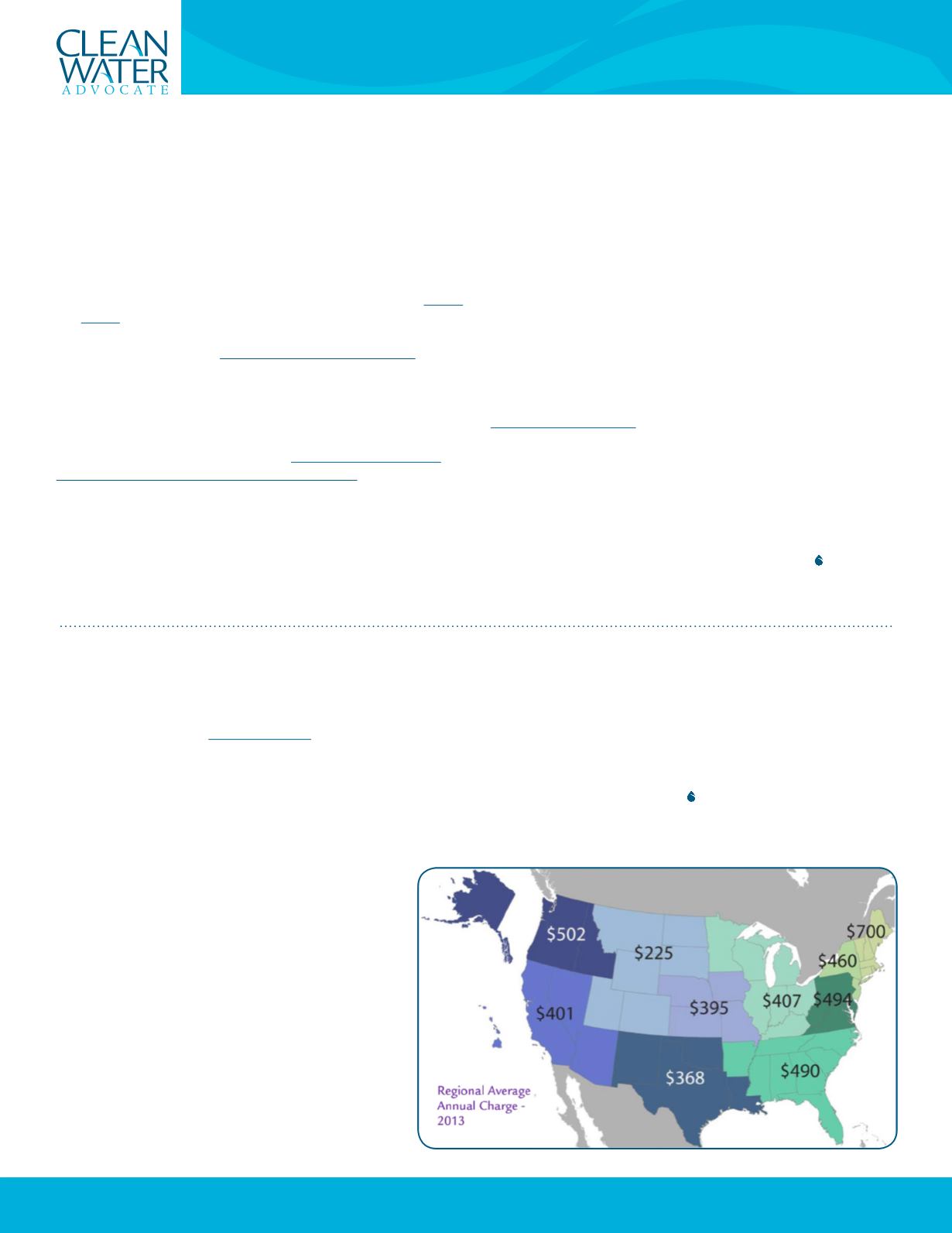
3
N
ACWA’s 2013
is now available. For
the twelfth straight year the increase in the average
cost of wastewater services for a single-family residence
has outpaced the rate of inflation, as measured by the
Consumer Price Index (CPI). In fact, the average cost of wastewater
services rose 5.5 percent in 2013, more than triple the rate of infla-
tion over the same period. The national average annual cost for a
single family residence is now $435.
Charges Projected to Reach $500 by 2016
The results from the
NACWA Index
survey continue to indi-
cate a steady rise in the average service charge, with projec-
tions showing an increase of about 5 percent per year over
the next five years. Average annual charges are expected to
top $500 by 2016 and $568 by 2018.
Regional Data Provide More Complete Picture
Regional level data, which better account for the cost of liv-
ing and other variables, often provide more accurate bench-
marks for utility managers. The minimum and maximum
values from each of the ten U.S. Environmental Protection
Agency (EPA) regions provide the range of values that make
up the national average annual service charge of $435, with
average annual charges ranging from a low of $225 in EPA Region 8, to
a high of $700 in EPA Region 1.
NACWA has published the
Cost of CleanWater Index
(formerly the
Service
Charge Index
) annually since 1986.
2
NACWA Index Released, Service Charge
Increases Again Outpace Inflation
N
ACWA has been urging the U.S. Environmental Protection
Agency (EPA) and Congress to support communities in
their desire to advantage of integrated planning by provid-
ing a financial and technical assistance. Additional ex-
amples of successful use of integrated planning could lead to a sought
after a tipping point, making it a major pathway toward compliance.
The Association was pleased to work with a bi-partisan group of
and
Members of Congress who pledged to work together to
secure funding in EPA’s FY15 budget and was doubly pleased that the
Agency has come forward to
in tech-
nical assistance for up to five communities to develop and implement
an integrated plan. In its notice of fund availability, EPA indicated that
if more money can be found, more communities can be helped.
Spokane Plan Offers Glimpse at the Future
Since June 2012 when EPA rolled-out the
NACWA has
been a primary advocate for helping communities take advantage of
the initiative. The approach offers considerable potential to help com-
munities more flexibly – and therefore more affordably – meet compli-
ance obligations under the CleanWater Act (CWA), especially those
relating to wet weather management. To date, NACWA has organized
workshops in seven EPA regions for Association members to learn
about integrated planning from the key EPA staff and from State water
quality administrators who both play important roles in its implemen-
tation. Numerous presentations and discussions have also taken place
at NACWA conferences.
Integrated planning, so far, has primarily been used as a tool by com-
munities in the process of negotiating consent decrees – and not by
those working on permit renewal through the normal NPDES process.
Integrated planning, however, has the potential to become a standard
operating approach for managing CWA compliance obligations – and
be used to negotiate NPDES permit renewals outside an enforcement
proceeding. In doing so, communities could achieve better environ-
mental outcomes at more affordable costs for ratepayers. A recent
example is Spokane, Washington, which last month announced its
that will save ratepayers nearly $150 million
and lead to better environmental outcomes for the community at-large.
The question remains, however, whether Spokane will remain an out-
lier or a leading indicator of a trend toward a greater adoption of the
integrated planning approach. NACWA is working hard to ensure
that Spokane is a trend-setter by finding the resources to support more
communities in their efforts to embrace integrated planning and pro-
vide better environmental outcomes for their ratepayers.
Integrated Planning Gets a Boost from EPA


